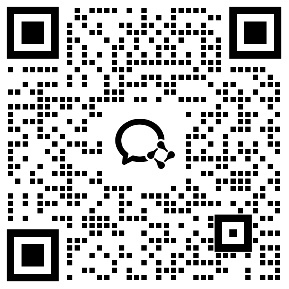一般現在時
1.概念:指經常、反復發生的動作或行為及現在的某種狀況。
2.時間狀語:always, usually, often, sometimes, every week (day, year, month…), once a week, on Sundays,
3.基本結構:動詞+ 原形 (如主語為第三人稱單數,動詞上要加(e)S)
4.否定形式:am/is/are+not;此時態的謂語動詞若為行為動詞,則在其前加don't,如主語為第三人稱單數,則用doesn't,同時還原行為動詞。
5.一般疑問句:把be動詞放于句首;用助動詞do提問,如主語為第三人稱單數,則用does,同時,還原行為動詞。
6.例句:. It seldom snows here.
He is always ready to help others.
Action speaks louder than words.
7.特殊用法:一些動詞可用一般現在時來表達現在進行時:
verbs of the senses: hear,see,taste,smell
verbs of the thinking: believe,know,mean,realize,think,remember
verbs of the linking: dislike,fear,hate,like,love,want
verbs of the possession: belong,have,own,possess
一般過去時
1.概念:過去某個時間里發生的動作或狀態;過去習慣性、經常性的動作、行為。
2.時間狀語:ago, yesterday, the day before yesterday, last week(year, night, month…), in 1999, just now, at the age of 5, one day, long long ago, once upon a time, etc.
3.基本結構:含有Be動詞主語+was/were+......
不含有be動詞:主語+動詞過去式+......
4.否定句:帶be:主語+was/were not+動詞原形+......
不帶be:主語+didn't+動詞原形+......
5.一般疑問句:含be動詞was或were放于句首;
不含be動詞用助動詞do的過去式did 提問,同時還原行為動詞原型。
6.例句:She often came to help us in those days.
I didn't know you were so busy.
She sang a song of Lin Feng yesterday[1].
現在進行時
1.概念:表示現階段或說話時正在進行的動作及行為。
2.時間狀語:now, at this time, these days, etc.
3.基本結構:Be動詞、am/is/are+doing
4.否定形式:Be動詞、am/is/are+not+doing.
5.一般疑問句:把be動詞放于疑問詞的后面。
6.例句:How are you feeling today?
He is doing well in his lessons.
7. 一般表示位移的詞如leave fly arrive go come. 等用現在進行時表將來。
I am flying Beijing next week .表示我下周即將飛往北京。
He is leaving for Beijing tomorrow. 他明天即將去北京。
過去進行時
1.概念:表示過去某段時間或某一時刻正在發生或進行的行為或動作。
2.時間狀語:at this time yesterday, at that time或以when引導的謂語動詞是一般過去時的時間狀語等。
3.基本結構:was/were + doing
4.否定形式:was/were + not + doing.
5.一般疑問句:把was或were放于句首。
6.例句:At that time she was working in a PLA unit.
When he came in, I was reading a newspaper.
現在完成時
1.概念:過去發生或已經完成的動作對現在造成的影響或結果,或從過去已經開始,持續到現在的動作或狀態。
2.時間狀語:recently, lately, since…for…,in the past few years, etc.
3.基本結構:have/has + done
4.否定形式:have/has + not + done.
5.一般疑問句:have或has提前。
6.例句:I've written an article.
It has been raining these days.
過去完成時
1.概念:以過去某個時間為標準,在此以前發生的動作或行為,或在過去某動作之前完成的行為,即“過去的過去”。
2.時間狀語:before, by the end of last year(term, month…),by the time...,etc.
3.基本結構:had + done.
4.否定形式:had + not + done.
5.一般疑問句:had放于句首。
6.例句:As soon as we got to the station, the train had left.
By the end of last month. We had reviewed four books
一般將來時
1.概念:表示將要發生的動作或存在的狀態及打算、計劃或準備做某事。
2.時間狀語:tomorrow, next day(week, month, year…),soon, in a few minutes, by…,the day after tomorrow, etc.
3.基本結構:am/is/are + going to + do;will/shall + do.
4.否定形式:am/is/are + not+going to; 在行為動詞前加will/shall(will適用于所有人稱,shall只用于第一人稱)
5.一般疑問句:be放于句首;will/shall提到句首。
6.例句:They are going to have a competition with us in studies.
It is going to rain.
I think he will be back soon
過去將來時
1.概念:立足于過去某一時刻,從過去看將來,常用于賓語從句中。
2.時間狀語:the next day(morning, year…),the following month(week…),etc.
3.基本結構:was/were + going to + do;would/should + do.
4.否定形式:was/were + not + going to + do;would/should + not + do.
5.一般疑問句:was或were放于句首;would/should 提到句首。
6.例句:He said he would go to Beijing the next day.
I asked who was going there .
2初中英語語法八大時態
一、一般現在時:
基本結構:①動詞原形 ②主語三單:動詞原形+s/es
三種常考基本用法:1、經常性和習慣性動作
Eg. I always get up early.
2、客觀事實和普遍真理
Eg. The earth goes around the sun.
3、在時間狀語從句及條件狀語從句中,一般現在表將來
If it doesn't rain, we will have a picnic.
其中,第三種用法就是學生們熟知的"主將從現"的原則,這一點大家務必掌握,此知識點會在初二學習,同時也是中考重要考點.
常見時間狀語:
always, usually, often, sometimes, every day, on Sundays, at weekends, once a week, twice a month, etc.
二、一般過去時:
基本結構:動詞的過去式
基本用法:
1、過去某個時間里發生的動作或狀態
Eg. I got up late yesterday.
2、過去習慣性、經常性的動作
Eg. When I was in the countryside, I often swam in the river.
常見時間狀語:ago, yesterday, the day before yesterday, last week (year, night, month…), in 1986, just now, at the age of 10, at that time, once upon a time, etc.
三、一般將來時:
基本結構:①am/is/are/going to + do;②will/shall + do.
基本用法:
am/is/are/going to + do
1、(人)計劃打算做某事
Eg. I'm going to go shopping with my mom tomorrow.
2、(事)即將發生
Eg. Look at the clouds, it's going to rain.
will/shall do
1、將來的動作和狀態(相對較長遠)
Eg. You'll have your own house in the future.
2、禮貌詢問、客氣邀請
Eg. Will you go with me?
3、意愿
Eg. I will do it for you.
常見時間狀語:tomorrow, next day (week, month, year…), soon, the day after tomorrow, in+時間段(格外注意),etc.
四、現在進行時:
基本結構:am/is/are+現在分詞
基本用法:1、此時此刻正在進行的動作
Eg. I am writing a letter now.
2、現階段正在進行的動作
Eg. I am reading a book these days.
常見時間狀語:now, at this time, these days, etc.
五、過去進行時:
基本結構:was/were+現在分詞
基本用法:1、過去某時刻正在進行的動作
Eg. He was playing computer games when his father came home.
2、過去某時段正在進行的動作
Eg. He was doing his homework while his mother was cooking.
常見時間狀語:at this time yesterday, at that time或以when引導的謂語動詞是一般過去時的時間狀語等.
六、過去將來時:
基本結構:①was/were/going to + do;②would/should + do.
基本用法:從過去時間點看將來,常用于賓語從句中.
Eg. He said that he would marry her.
常見時間狀語:the next day (morning, year…), the following month (week…), etc.
七、現在完成時:
基本結構:have/has + 過去分詞
基本用法:
1、過去發生的動作對現在造成的影響或結果
Eg. I have finished my homework.
2、過去已經開始,持續到現在的動作或狀態
Eg. We have waited for her for 2 hours.
常見時間狀語:recently, lately, so far, up to now, since+時間點,for+時間段, in the past few years, etc.
現在完成時是考試中的重點也是難點,同學們需要格外加強.特別注意瞬間動詞和延續性動詞的轉化問題,具體會在課程中詳細講解,在此不加以贅述.
八、過去完成時:
基本結構:had + 過去分詞
基本用法:以過去某個時間為標準,在此以前發生的動作或行為,即"過去的過去".
Eg. Just before the English class, I suddenly realized that I had left my English textbook at home.
常見時間狀語:before, after, by the end of last year(month…),etc.






